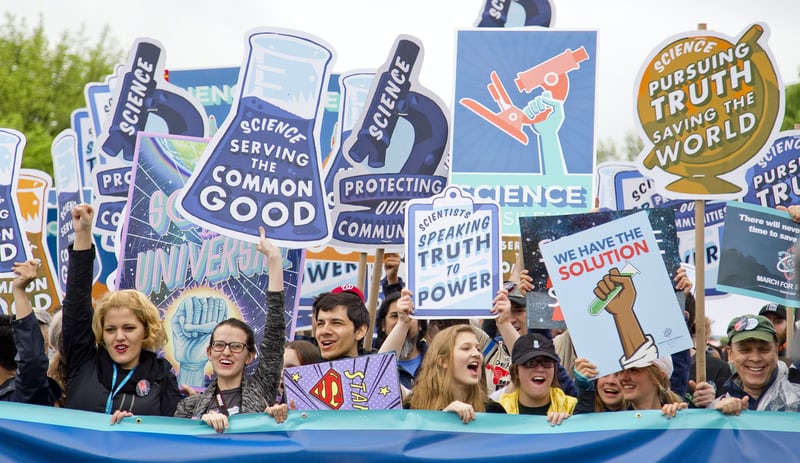

As embarrassing as it is to admit, my general approach in the past has been to avoid conversations, and thereby engaging with, anti-vaxxers. I have believed it too difficult – futile even – to try to change their minds, which from my medical background can easily feel like the only reasonable solution. Sometimes, I have even felt within me the inkling of perceived moral or knowledge superiority that I have been so ready to critique in others working in the biomedical sphere before, even if in other contexts. Alas, my tail between my legs, I am reminded that no one of us is immune to self-serving biases or judgment. Nonetheless, I had a different experience recently, when I entered into conversation with a close friend, who was hesitant about when they should go to get their COVID-19 vaccine. They recognised that they were lucky enough to live in a country where the vaccine was readily available, but nonetheless felt themselves concerned about the prospect of receiving an injection that they felt had been so quickly developed. Further, they added that they had not necessarily been informed by their clinician, or other trustworthy scientific sources, about how the vaccines had been created and how they worked, in a language that was accessible to them.
It dawned on me whilst we were speaking that I only really knew the answers to these questions because I had access to the scientific literature about them, as well as a basic science background, and a significant dose of trust in vaccines, as a result of occupying the public health space. I tried to explain to them how vaccines work in a concise way, as well as to clarify the research and development process for the most recent COVID-19 vaccines. I struggled to do so without resorting to technical language. I also had to admit that despite a knowledge of how much research there is behind these vaccines, including a realistic amount of clinical trial data given the timeframe afforded by a pandemic, it could feasibly seem from outside of the medical sphere that they had been developed quickly. And once past my own initial – near visceral – emotional reaction, I grasped quite how sensible it is to want to have answers to questions like: what’s in the vaccine? What does a vaccine do to the body? What might the side effects be? How do I know that a vaccine won’t do harm to me, or my loved ones? These are not absurd pieces of information to be wanting before getting the shot – at least, I do not think so. Rather, they are the sorts of questions I would be expecting any patient to have before, say, an operation or being started on a new medication. And I’d like to think that there’s more sensitive and nuanced answers than to invoke straight away one’s ‘responsibility to the collective’ or the mandate to ‘trust the scientists,’ – both of which are largely true, but which in isolation do not necessarily hit the mark of particularly convincing for the questioning individual.
Once again, COVID-19 has placed a spotlight on and amplified a previously existing issue. Vaccine hesitancy is not new, and it is a significant threat to global health (The Lancet Child & Adolescent Health, 2019; World Health Organisation, 2019). But it is also likely to be misguided to assume that everyone will want to be vaccinated, no questions asked. Given that vaccines are probably our best shot at putting an end to the pandemic, it is especially significant that we should take care of, and improve, our scientific communication around them – at the very least, so that people have access to accurate and helpful information that supports them in their decision-making process. What might the ‘how’ needed to achieve this aim look like?
First, what is known about COVID-19, including its new variants, as well as the vaccines hitting the market needs to be communicated clearly, and in language that is understandable for the public. The media too, have a responsibility to avoid salacious reporting in this context, particularly of vaccine side effects, favouring rather measured and unbiased writing. Adverse vaccine effects do exist, including as pertinent to COVID-19 vaccines, and our knowledge of the balance between harms and benefits – particularly in different age groups – of these vaccines is still evolving (Cunningham, 2021; Hunter, 2021). But even such a fact can be communicated in a non-inflammatory fashion, such that it is another important piece of information to be taken into account – and not immediately framed as a necessary source of panic or outrage. Second, but related, there is also significant scope for the clinical trial data relevant to the safety and efficacy of each vaccine to be more routinely turned into digestible content that is not just available behind scientific jargon and/or a journal’s paywall, but also on platforms and in language that all who want to know more can easily access. Further, researchers, pharmaceutical companies and governments should not shroud the vaccine development or roll-out process in secrecy, but be honest about how and why key decisions are being made, including by whom. Such increased transparency between these sectors and the public may serve to build more trusting relationships amongst them, and perhaps even foster a greater sense of collaboration towards a common goal: that of minimising the suffering that the COVID-19 pandemic and its consequences have inflicted, leaving few unscathed.
Finally, and perhaps most importantly, any approach that is even coming close to trying to change a person’s mind or to getting someone else to understand another’s perspective is unlikely to be successful if it is not rooted in kindness. Almost all people are not out to do harm, but want to be able to make choices that feel safe and logical to them. Before they choose, many would like a reasonable amount of information presented to them from one or more reliable sources, and in a format that they can understand and with which they can engage – versus one that they feel that they have to blindly obey. Optimising and maximising the delivery of scientific information about vaccines (and perhaps, overall) in an open, compassionate and non-judgmental manner may not convince everyone, but it would – I sincerely hope – encourage a more flexible and constructive dialogue about vaccine uptake, including in the context of aiming for an end to the COVID-19 pandemic.
Cunningham, A. S. (2021). Harms vs benefits of Covid-19 vaccines: Limited knowledge, uncertain balance. The BMJ. https://www.bmj.com/content/373/bmj.n1159/rr-7
Hunter, P. R. (2021). Thrombosis and bleeding after the Oxford-AstraZeneca covid-19 vaccination. The BMJ. https://blogs.bmj.com/bmj/2021/05/05/thrombosis-and-bleeding-after-the-oxford-astrazeneca-covid-19-vaccination/
The Lancet Child & Adolescent Health. (2019). Vaccine hesitancy: A generation at risk. The Lancet Child & Adolescent Health, 3(5), 281. https://doi.org/10.1016/S2352-4642(19)30092-6
World Health Organisation. (2019). Ten threats to global health in 2019. https://www.who.int/news-room/spotlight/ten-threats-to-global-health-in-2019
More from Sofia Weiss Goitiandia here.
BCPHR.org was designed by ComputerAlly.com.
Visit BCPHR‘s publisher, the Boston Congress of Public Health (BCPH).
Email [email protected] for more information.
Click below to make a tax-deductible donation supporting the educational initiatives of the Boston Congress of Public Health, publisher of BCPHR.![]()
© 2025-2026 Boston Congress of Public Health (BCPHR): An Academic, Peer-Reviewed Journal
All Boston Congress of Public Health (BCPH) branding and content, including logos, program and award names, and materials, are the property of BCPH and trademarked as such. BCPHR articles are published under Open Access license CC BY. All BCPHR branding falls under BCPH.
Use of BCPH content requires explicit, written permission.